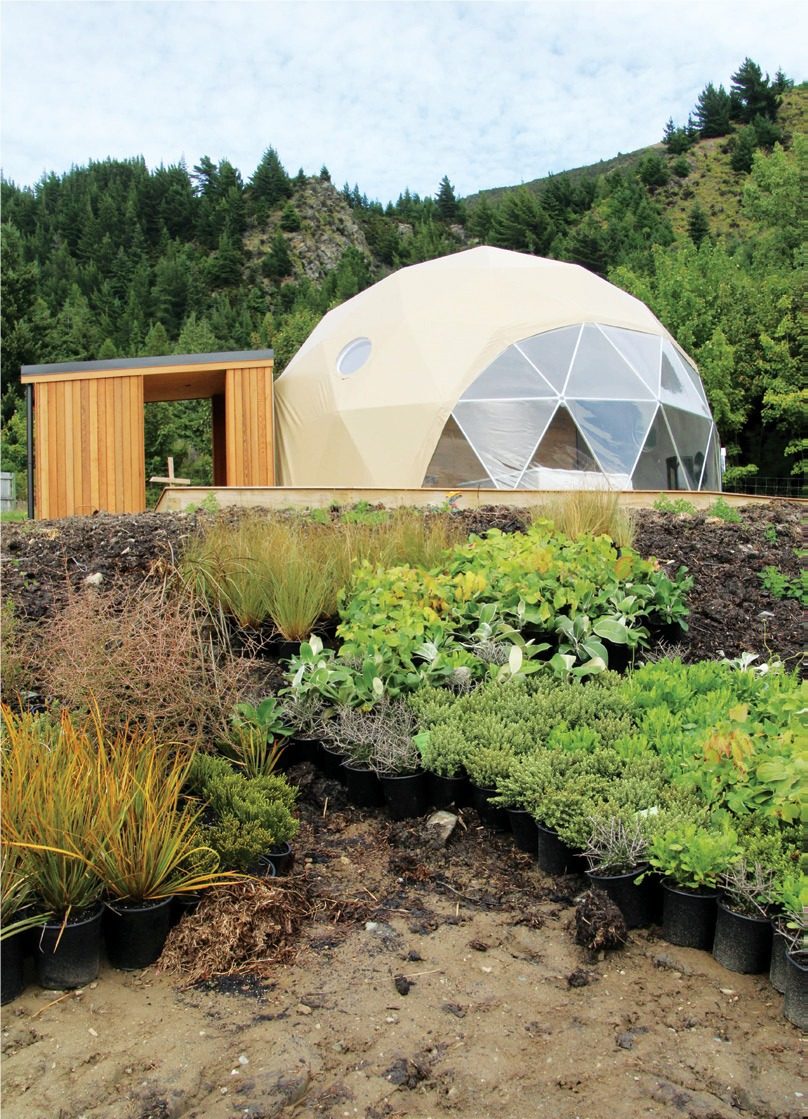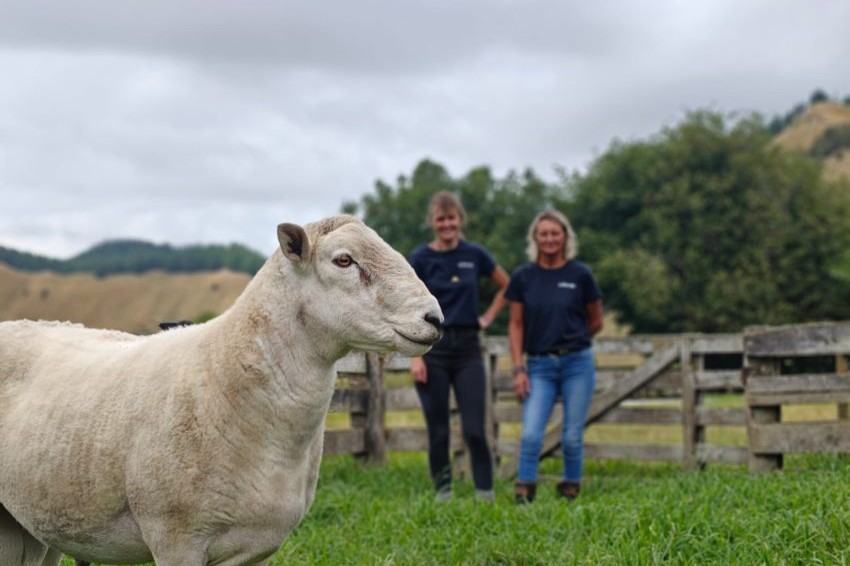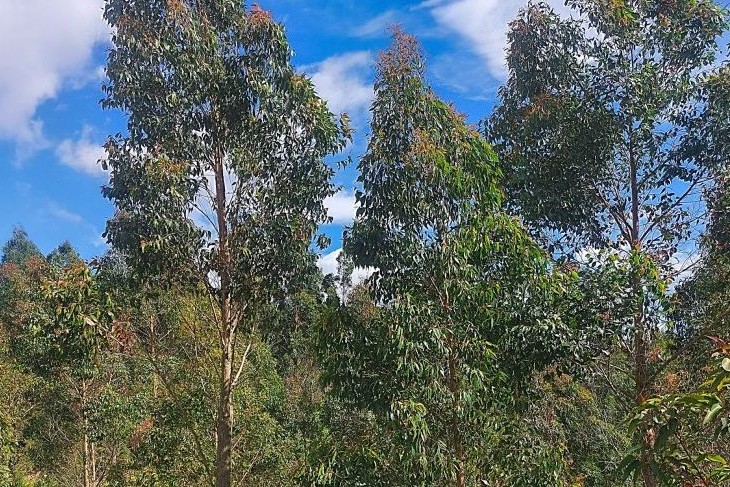Although they registered for the Emissions Trading Scheme 11 years ago with no intention of cashing in the carbon credits, the income from selling the credits was a welcome boost after the income from Richard and Sarah Burdon’s hunting business dried up during the pandemic. Lynda Gray reports.
Joining the Emissions Trading Scheme (ETS) has stacked up on a number of levels for Richard and Sarah Burdon. As well as netting them $240,000 from the sale of carbon credits in 2020, registering with the scheme has had complementary spin-offs for the agritourism side of their Glen Dene Station farming business.
The $240,000 cash injection was a welcome boost for the Burdons, whose hunting business income dried up with the Covid-19 lockdown.
“We were hit hard but selling the carbon credits offset the losses,” Richard says.
The units sold were from some of the regenerating native area registered in the scheme and amounted to 7000 tonnes of carbon equivalent units at $35 a tonne, less a 4% commission.
However, he says that cashing in credits to top up farm income during tough times was not the prime motivation for joining the ETS back in 2010.
“At the time carbon was about $6 to $8/tonne so the potential returns were low, but we joined up for other reasons. We’re farmers, conservationists and agritourism operators and we could see that joining the ETS aligned with the goals and values of us and each enterprise.”
Getting to grips with the ETS and carbon credits took a while. Richard initially discussed the potential of the scheme and how it might work for Glen Dene with Dr Carly Green, a globally recognised GHG assessor and specialist living locally, then got practical advice and plans on exactly what to do from Forest Management Limited.
“I’d recommend getting a forestry specialist involved because it is a complex system to get your head around.”
FML did a financial analysis of the costs and returns and modelled different tree planting options that will qualify under the scheme.
The Burdons registered under the ETS 78ha of regenerating native bush and 40ha of exotic woodlots comprising Douglas fir, Pinus radiata and macrocarpa.
The registration process requiring the area, type and age of the forest area was relatively straightforward thanks to old Catchment Board documents and detailed permit information around the fencing and burn-offs at Glen Dene.
“We’re lucky that we had those records and it’s highlighted to us the importance of recording for the future any planting and forestry related production and management activities.”
Their next step is to register in the ETS 55ha of production forestry at Longridge, their South Otago farm.
Richard’s advice to farmers with native or production forests that fit the ETS criteria is to act now and get carbon credits in the bank.
“It makes sense given that farmers will be required to keep track of and calculate their annual greenhouse gas emissions by 2025. There’s nothing to lose by banking them, even if they sit there.”
Being labelled a ‘carbon farmer’ doesn’t sit well with Richard and it seems wrong to him that hill country farmers in some parts of the country can make more per hectare from sequestering carbon than producing lamb or beef.
“I personally think it’s wrong that people are prepared to pay a high price to offset their carbon footprint but not for prime lamb and beef products.”
Glen Dene is probably more or less in a carbon neutral situation because of the extensive area that has large tracts of regenerating native bush as well as production woodlots planted by his parents. But there’s still a lot to understand and learn.
“There’s still a lot more discussion to be had about carbon and the role it plays in the environment and I think it’s up to all farmers to be involved.”
ETS and farm forestry
An ETS eligible forest:
- is at least 1ha in size.
- is mainly made up of tree species that can reach 5m in height in that location at maturity (does not include trees grown primarily for fruit or nuts, gorse, broom, or native shrubs)
- has the potential to reach 30% tree canopy cover in each hectare at maturity.
- has the potential to reach an average tree canopy cover width of 30m at maturity.

This definition means that some areas of land that don’t look like a forest, like farmland with regenerating native tree seedlings, may be captured under the forest land definition.*
There are two classes of forests in the ETS.
- Pre-1990 Forests. These existed before 1 January 1990 and are considered baseline forests – they don’t count towards New Zealand’s obligations related to climate change and there are penalties for removing these trees.
- Post-1989 Forests. These were established after 1 January 1990 and are considered new forests. They can be counted towards climate change obligations and forest owners can earn carbon credits from their growth.
A forest does not include a shelter belt of forest species less than 30m in width, or trees grown primarily for the production of fruit and nut crops.
Most woodlot owners are familiar with the classes of forest eligible for the ETS; what they overlook are their obligations when it comes to the harvesting of pre-1990 woodlot areas of more than 2ha.
“Even if the area is not part of the ETS you’re obliged to replant that area or pay back the carbon liability,” Iain Macdonald Forestry Management Group procurement manager says.
“You can plant the area elsewhere on your farm or transfer it to another property, but you have to replant it because it’s regarded as part of New Zealand’s capital carbon stock.”
Macdonald says it’s details such as these as well as the different carbon sequestration rates according to tree age and species, and carbon prices (which moved to an auction system in March), that make keeping track of a woodlot owner’s carbon situation and assessing the optimal time for harvest complex and confusing for the uninitiated.
“We’re interested in working with farmers establishing forest lots for the first time after 1989. It’s all about strategic planting on marginal areas; we look at how a farmer can plant out these areas, carry the same number of stock and get the carbon credits.”
Changes
Changes to the ETS came into force in January 2021 to align with new targets under the Climate Change Response (Emissions Trading Reform) Amendment Act 2020.
The three key changes are:
- A new penalty system for forest owners who fail to or incorrectly file a mandatory return; or, for those with a liability of more than 25,000 units, do not surrender or pay units by the due date.
- Introduction of a formal process for the transfer of a forestry lease or right on registered post-1989 forest land in the ETS.
- Abolishment of the fixed price option (FPO) for the payment of emissions from 1 January 2021, instead forestry owners will have to surrender units.
The changes mean that a landowner could register under the ETS a new planted out area not previously in forest under new averaging rules, Allan Laurie, Laurie Forestry says.
“This essentially means up to half the projected carbon in the forest could be claimed with no liability other than the need to maintain the area in a forest.”
But he stresses that the ETS rules are complex and complicated to understand, and reiterates the importance of being well informed.
There have been tricky situations, he says, such as landowners claiming carbon credits (NZ Units) during the forest rotation.
“The landowner, or the new landowner if the land is sold, then harvests at maturity not realising the carbon credits claimed have to be paid back, or at least most of them.”
This could become a significant financial liability because of the rapid rise in the carbon price, he says.
“If, for example, the landowner sold the NZUs at the top of the market in 2013 for $20 each, they’ll be worth more than $38 today, so the implications are potentially serious.”
Kirsten Stuart, also a Laurie forestry consultant, says whether there is much to be gained from carbon credits is very much dependent on the specific situation of the landowner, tree species, year of planting, area registered and in what year, and whether the intention is to return the land to pasture or keep it planted in perpetuity.
“For anyone with newly planted forests, the ETS potentially has a lot to offer in terms of financial gain. But for those with older plantings, the gain can vary considerably, and in some cases, there is no benefit whatsoever. Unfortunately, there is no ‘one size fits all’ approach when it comes to the ETS.”
Sweet spin-off
Manuka honey production is an onfarm diversification that has come about from the regenerating native cover included in the ETS area. The Burdons are in the fourth year of leasing some of the manuka country to Alpine Honey, a local apiarist business. Alpine pays a production-based lease that considers the UMF of the honey produced.
“We’ve had good years and bad. Last year was a fantastic production season but this year it’s been a poor flowering season,” Richard says.

Glamping and farm tours
Six geodesic dome tents are the latest addition at The Camp, the Hawea camping ground owned by the Burdons. The classy tents are a new accommodation option for guests. The camping ground, alongside Lake Hawea, also has a Rec Dome (or Beehive), a community space for campers or for private functions and gatherings.
Meanwhile on a Glen Dene hilltop a tent, comfortably decked out with table, chairs and a fire, is a refreshment stop-off for Glen Dene farm tour visitors and hunters. The farm tours, a new diversification started in the new year, include a visit to the beehives to learn about the importance of bees in farming.
The story of the breakfast honey on toast coming direct from the manuka country of Glen Dene is a compelling one for farm tour and hunting visitors.
“The carbon credits, ETS and manuka honey all add to the agritourism side of the business along with the sheep, cattle and deer.”
*Source: www.mpi.govt.nz/forestry/getting-started-forestry/forestry-rules-regulations/introduction-emissions-trading-scheme-ets-forestry/
Cashing in on carbon
The fixed price for carbon in 2020, was about $35 a tonne. This fixed price system was replaced in March by an auction system for the trading of carbon units. The spot prices announced in January, for a NZ Unit or carbon credit (which is one tonne of C02 equivalent) are $38.55, April 2021; $39.65, April 2022; $40.75, April 2023; $41.90, April 2024; and $43.05, April 2025.
Source: Forest Management Group.





